Introduction
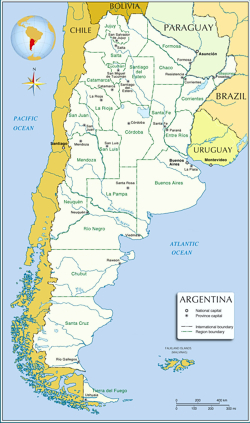
We are currently working on Cretaceous and Cenozoic floras from three provinces in Patagonia, Argentina: Chubut, Río Negro, and Tierra del Fuego. Our projects include the study of floras that range from latest Cretaceous to Miocene in age. The main goal of our research is to enhance our knowledge of the evolution and early diversification of angiosperms (flowering plants) in Patagonia through the study of plant fossils. We seek to increase our understanding of the floristic composition of ancient Patagonia by determining which taxa (types of plants) are present in the paleofloras we are studying and what their nearest living relatives are.
We can use this information to reconstruct the biogeography of Southern Hemisphere plants by mapping their global distribution patterns through time and using this information to infer their likely migration routes among continents.
Documenting the diversity of paleofloras also helps us to refine our understanding of the ancient climate of Patagonia because the temperature and moisture requirements of extinct plants can sometimes be estimated by comparison to those of their living relatives. Finally, the preservation of paleofloras can help us to understand the process of taphonomy (the burial and preservation of organisms in the geologic record) as it relates to plants.
We are focusing on the study of several specific paleofloras in order to address these issues:
La Colonia, Chubut Province
The La Colonia paleoflora represents an aquatic habitat. This flora is thought to be Late Cretaceous in age (Campanian-Maastrichtian), or in the age range of about 83.5-65.5 million years ago. As with the Lefipán paleoflora, the species diversity of the La Colonia flora is virtually unknown. The flora includes flowering plants represented by at least four different leaf types, aquatic ferns, and conifers, as well as seeds belonging to the Nymphaeaceae, or the water lily family of flowering plants. The genus Nelumbo, commonly known as the lotus, occurs in this flora; it is represented by fossils of both its distinctive leaves and fruits. The fact that this flora is Late Cretaceous in age makes it important for understanding the diversity and character of the ancient Patagonian flora prior to the end-Cretaceous mass extinction during which the dinosaurs became extinct at about 65.5 million years ago.
More Info
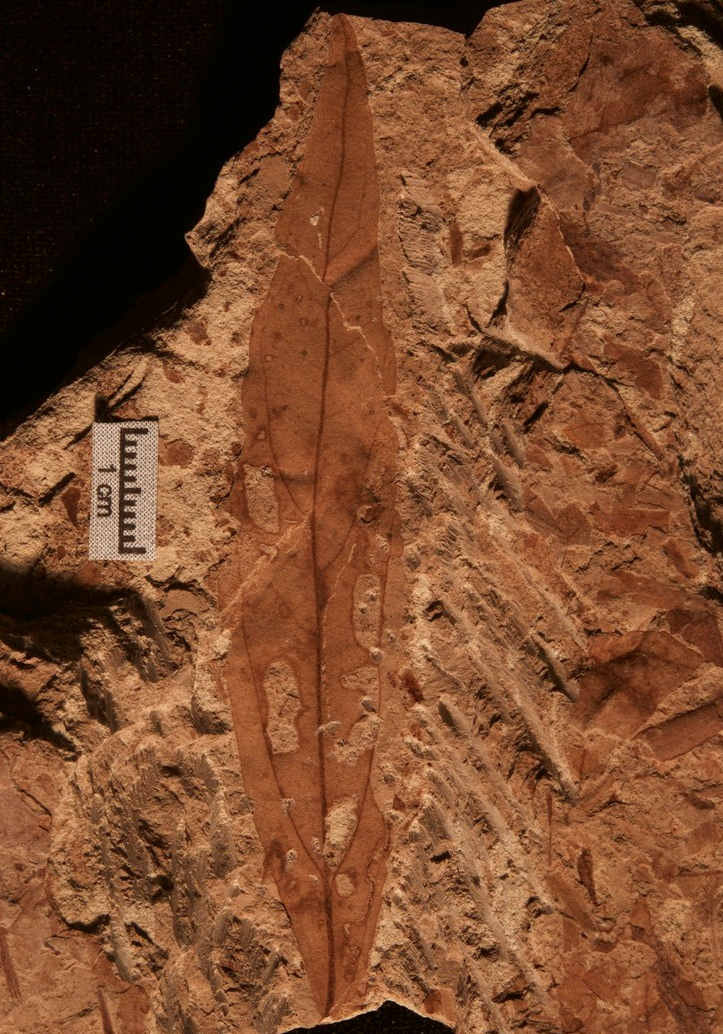
Lefipan, Chubut Province
The Lefipán paleoflora is a diverse fossil assemblage including pollen and megafossils (e.g., leaves, branches, etc.). This flora is thought to be latest Cretaceous (Maastrichtian) in age, about 65.5-66 million years old, based on the types of marine invertebrates found in the Lefipán Formation (the geologic unit bearing the flora). The paleoflora has two distinct parts. The lower part bears conifers and flowering plants, including the plant Nelumbo; Nelumbo is commonly known as the lotus and is also found in the La Colonia paleoflora. The upper part contains ferns, conifers, and flowering plants. The species diversity of this flora is not yet described in the scientific literature. Understanding the diversity of this paleoflora will be an important part of understanding how the ancient Patagonian flora was affected by the end-Cretaceous mass extinction, which occurred about 65.5 million years ago and was the extinction event during which the dinosaurs died out.
More Info
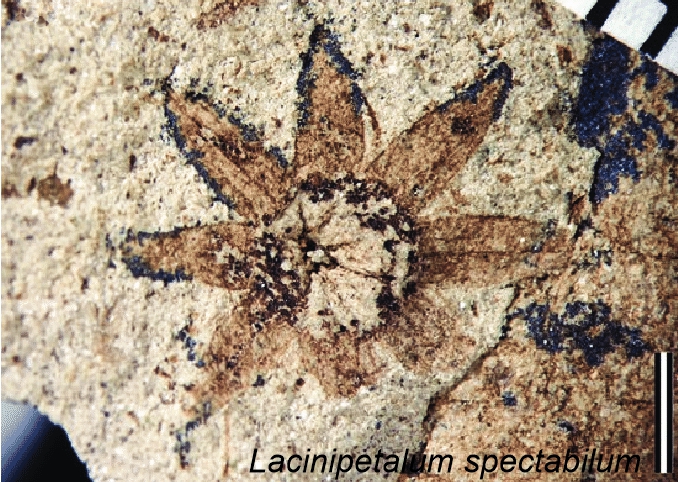
Salamanca, Chubut Province
The Salamanca paleoflora includes ferns, conifer leaves and cones, leaves and reproductive organs of flowering plants (e.g., flowers, fruits, etc.), fossil pollen, and petrified wood. This flora is thought to be early Paleocene in age, or about 61.7 million years old, based on multiple lines of evidence. The plants are thought to have grown in a river-dominated environment under a relatively moist climate; the presence of cold-sensitive plants, such as palms, indicates that there was no frost in the winter. This flora is especially important because it existed shortly after the end-Cretaceous mass extinction event (65.5 million years ago), and can help us to understand how the ancient vegetation of Patagonia recovered. Many vertebrates are also known from the Salamanca Formation (the geologic unit bearing the Salamanca flora), among the most interesting of which is a species of fossil platypus.
More Info

Laguna del Hunco, Chubut Province
The Laguna del Hunco paleoflora represents an ancient rainforest that grew around a volcanic lake. Dating of volcanic rocks that occur among the fossil localities that make up the flora indicate that it is early Eocene in age, or about 52 million years old. The Laguna del Hunco paleoflora is very diverse and includes abundant remains of flowering plants and conifers; ferns and a possible cycad have also been found. Although some plants discovered in the flora are still found in South America today, others are not; in fact, the types of plants found at Laguna del Hunco show a particularly interesting link to plants found today in Australia and surrounding islands. A diverse collection of animals is also known from the Laguna del Hunco localities, including insects and vertebrates such as frogs, a turtle, and fish. Our work on the Laguna del Hunco localities is focused on understanding the diversity and evolutionary relationships of the flowering plants based on their reproductive structures (e.g., flowers, fruits). In flowering plants, these structures often provide more useful information about evolutionary relationships than vegetative structures such as leaves.
More Info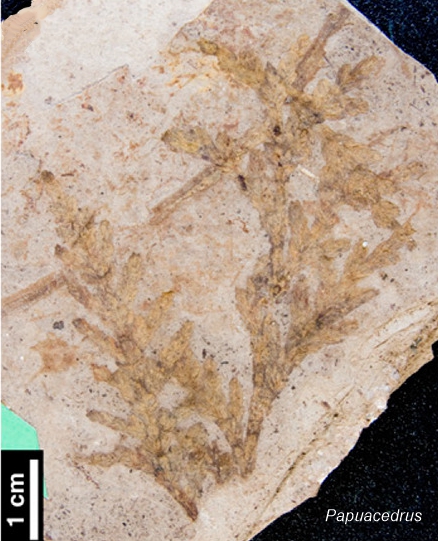
Río Pichileufú, Río Negro Province
The Río Pichileufú paleoflora is found about 100 miles (160 kilometers) northwest of the Laguna del Hunco paleoflora. Dating of volcanic rocks associated with the fossil localities indicates that the flora is about 4.5 million years younger than the Laguna del Hunco flora, or about 47.5 million years old (early middle Eocene). The biota of the Río Pichileufú localities is diverse, and includes flowering plants, conifers, ants, and frogs. As at Laguna del Hunco, some of the plants show a connection to the modern flora of Australia and its surrounding region. The preservation of this flora is not as good as that of the Laguna del Hunco flora, however, and the Río Pichileufú flora has not been thoroughly studied. Because the Río Pichileufú flora is found near the Laguna del Hunco flora and because it is only slightly younger, it is especially valuable for understanding how the ancient flora of Patagonia may have changed over a very short period of time. Our work on Río Pichileufú centers on examining the flowering plant reproductive structures it shares with the Laguna del Hunco flora.
More Info
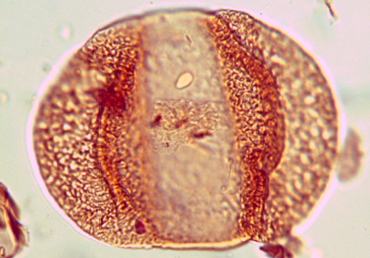
Pinturas, Santa Cruz Province
The Pinturas Formation outcrops in the Río Pinturas region southeast of the town of Perito Moreno. The formation as currently understood is divided into three sequences (lower, middle, upper) separated by unconformities; much of the formation is comprised of tuffs and eolian sandstones. The lower sequence may represent a forested habitat, whereas the middle and upper sequences may have had patchier forest and experienced intervals of dryness. Radiometric dates have been calculated based on samples from several localities (Cerro do los Monos, Portezuelo Sumich Norte, Estancia El Carmen) in the Pinturas Formation, yielding ages from about 16.43 Ma to 19.89 Ma, although the latter date may be too ancient. Some additional early attempts at dating are probably incorrect.
More Info
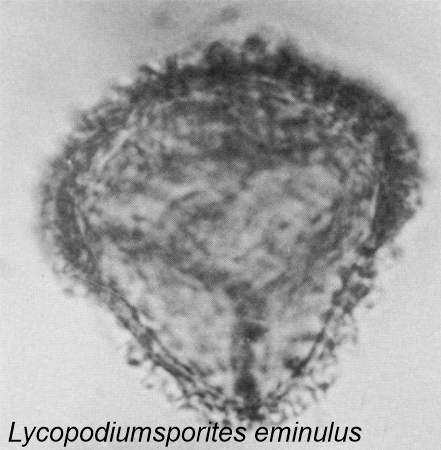
Cullen, Tierra del Fuego Province
The Cullen Formation outcrops at the coastal cliffs in the northeast of the Isla Grande of Tierra del Fuego, southernmost province of the Argentine Patagonia. They are continental deposits of early to mid Miocene in age, based on K-Ar isotopic analysis corroborated by palynological correlations. The formation is characterized by abundant levels of leaf impressions and others with paleosols. The macroflora is not diverse and is dominated by leaves of the South American Beech, Nothofagus and the gymnosperm Araucaria. The microflora is abundant and diverse, and contains spores of algae, bryophytes and pteridophytes as well as pollen grains of gymnosperms and angiosperms.
More Info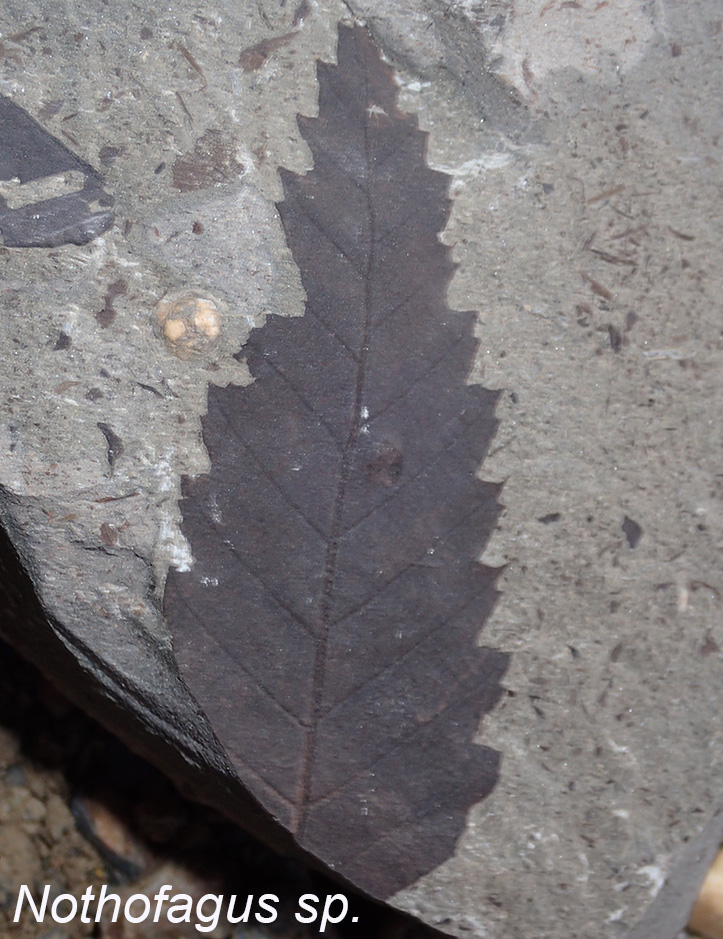
Carmen Silva, Tierra del Fuego Province
Outcrops of the Carmen Silva Formation are found in the NE Atlantic coast of the Isla Grande de Tierra del Fuego. Invertebrate biostratigraphic studies indicate a possible Miocene age and a possible delta front/prodelta for the paleoenvironment. The rediscovery of a previous 100+ year old site in the early 90's was found to be rich in angiosperm leaves, with the preliminary palynology indicating levels dominated by Nothofagus. Carmen Silva’s deposits are currently being studied within an integrated approach with the Cullen Formation.
More Info